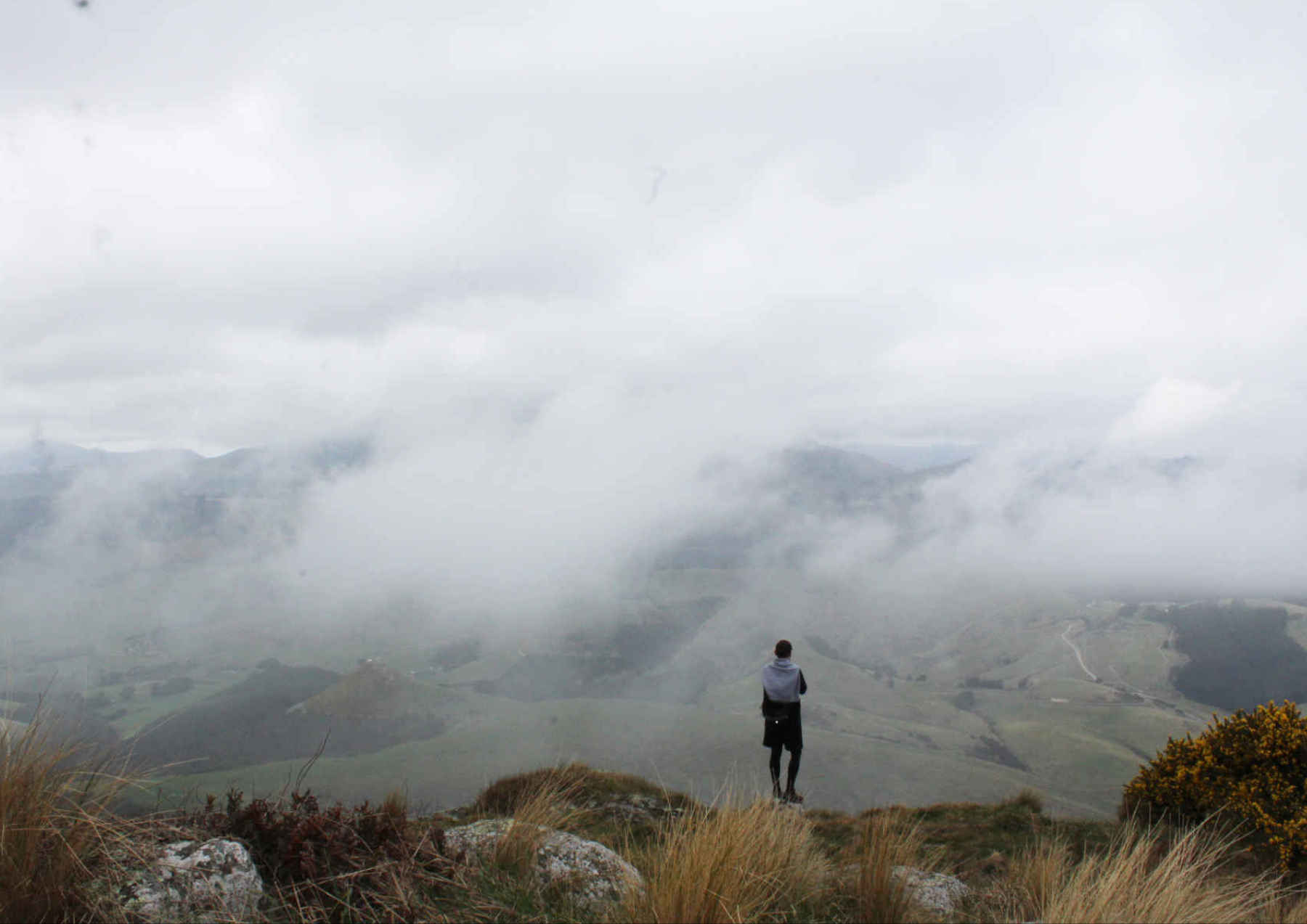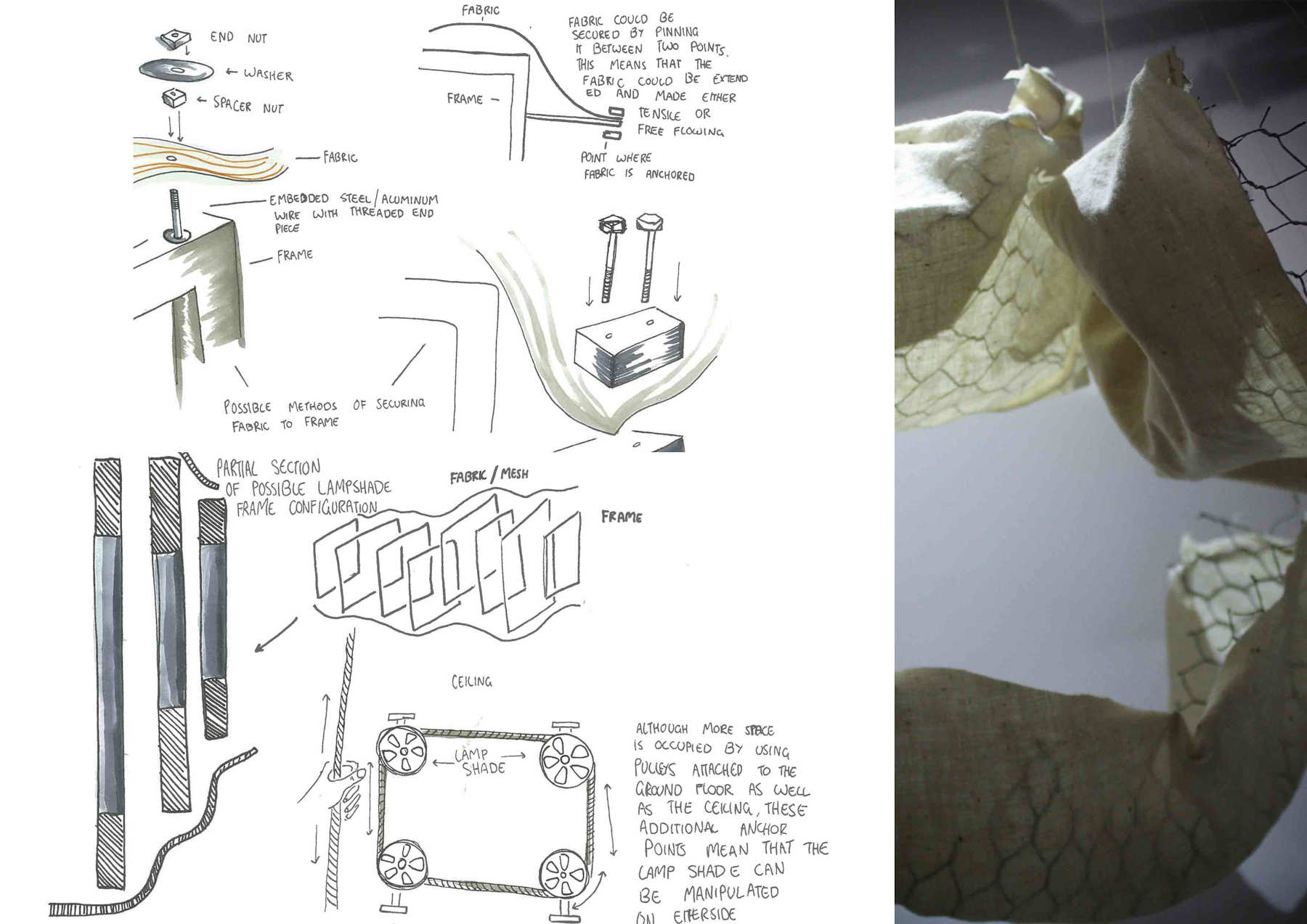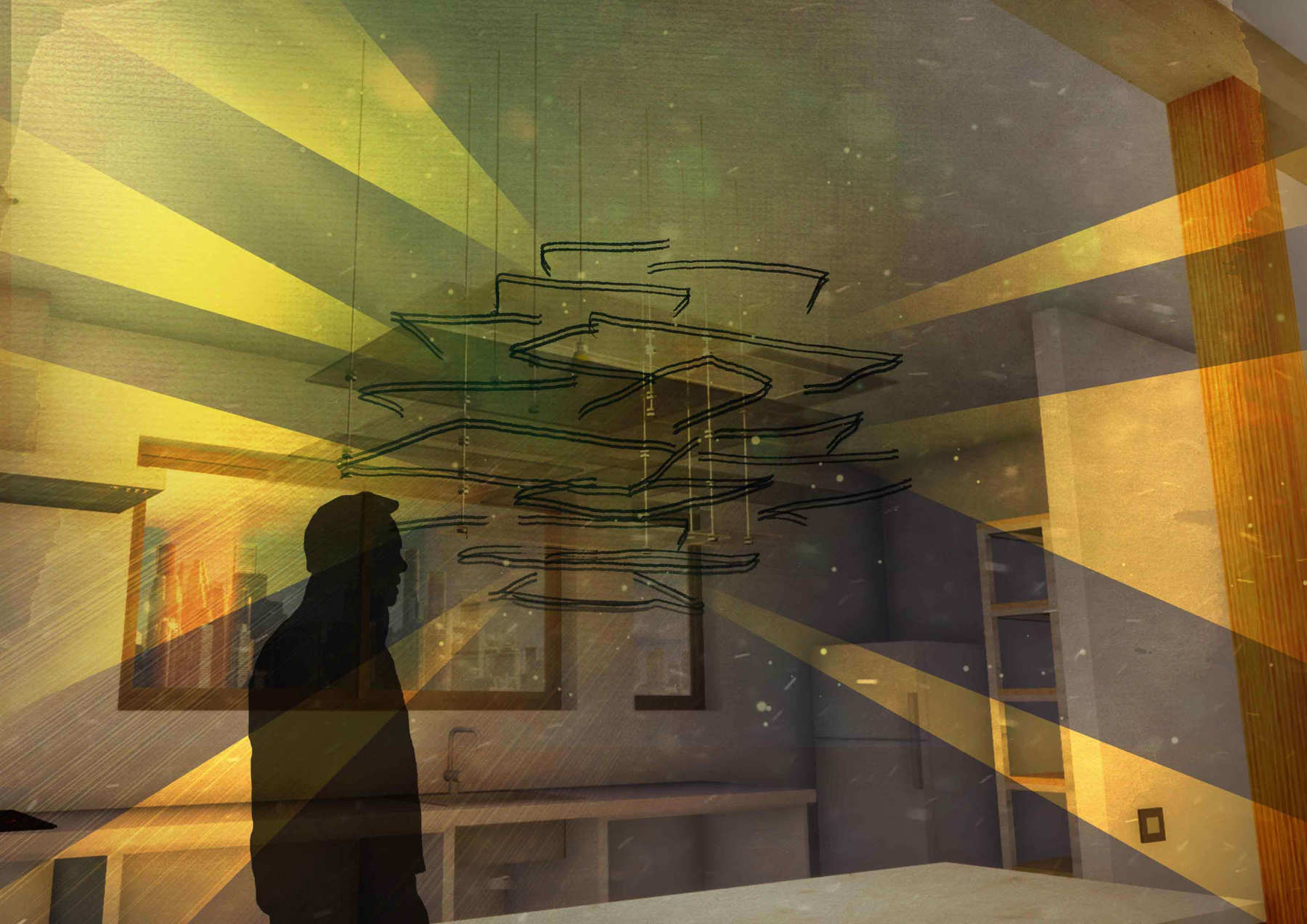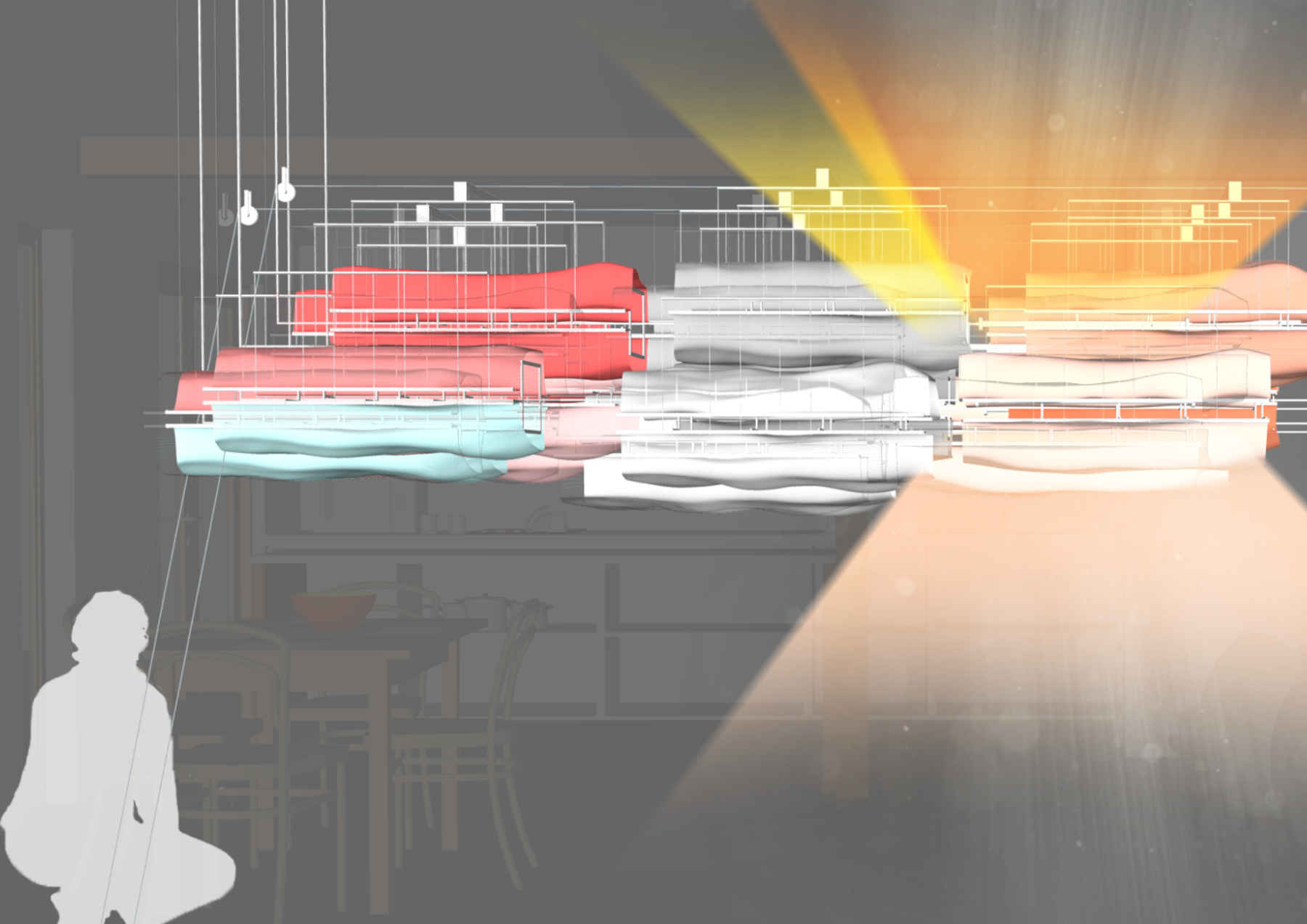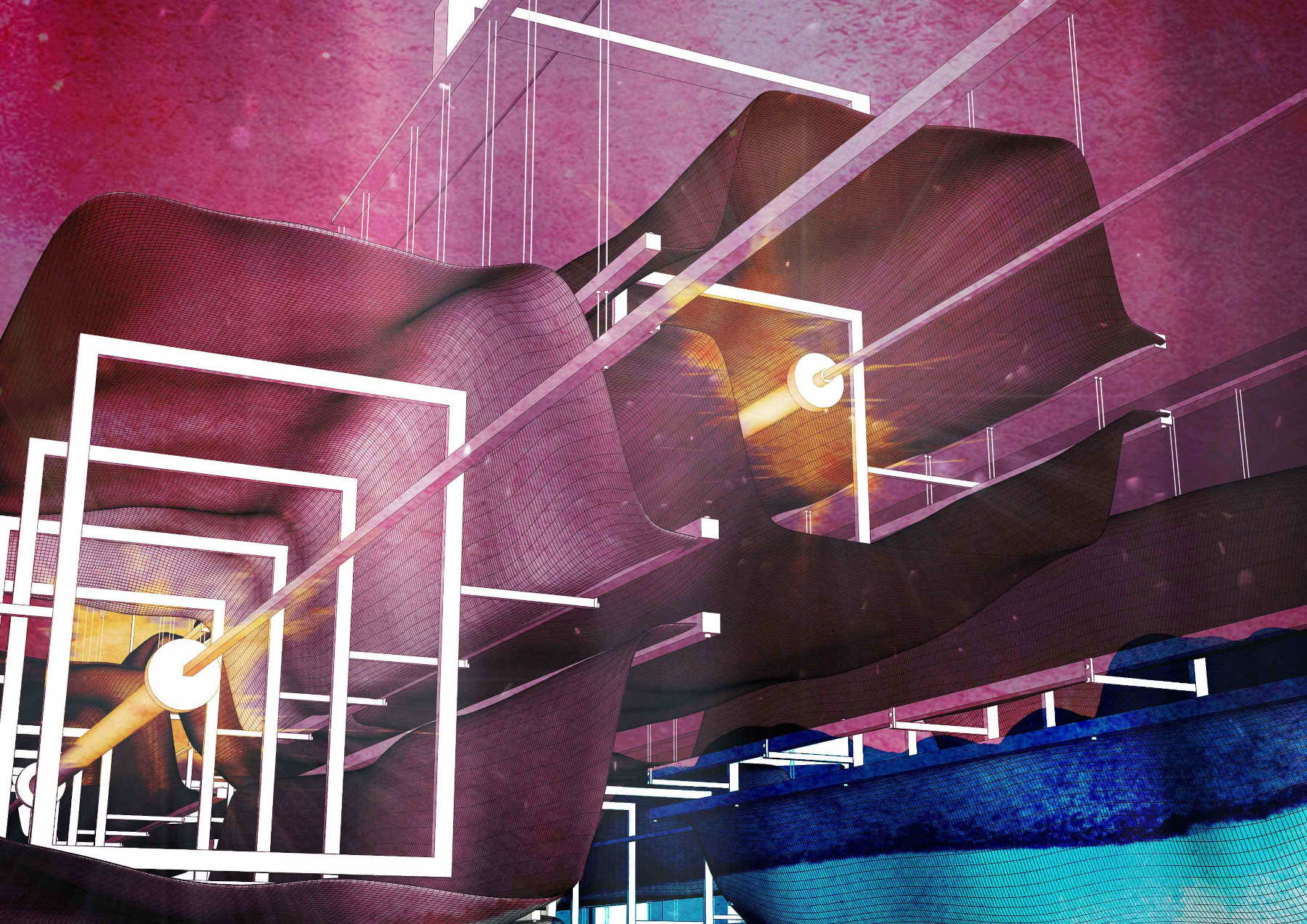Sam Weston - FIRST CLASS HONOURS PROJECT
Daily domestic rituals help shape people’s routines and behaviours, and structure the interaction with their homes. This project explores the connection between people and nature through domestic living. Design approaches to housing based on ‘Living Buildings’ and ‘Zero Energy’ offer an important step towards sustainability by lessening adverse impacts on the environment but maintain a conventional way of conceptualising and planning interior spaces. This project explores how daily routines around cooking, cleaning, sleeping and resting can be designed to heighten our understanding, connection and awareness of nature. The resulting concepts are applied to, and reimagine the ‘Zero Energy House’ at Point Chevalier, Auckland.

‘Living Buildings’ are sustainable and biophilic dwellings based on current best practice guidelines and the ‘Zero Energy House’ is a local example of a dwelling that utilises the ‘Living Future Institute’s ‘Living Building system’. It incorporates systems such as solar energy, rainwater collection, a greywater system, use of recycled materials, and thermal mass.
This speculative proposal focuses on interior architecture including lighting and furniture design, and uses qualities of natural phenomena to reimagine five key ritual-based spaces. The intention is to forge a greater connection between both the dweller and the natural environment, whilst also fitting within the practical framework of the ‘Zero Energy House’.






The design process was based on the research into phenomenological qualities, I documented five unique phenomena experiences through photography, illustration, and first-person written documentation; each aspect was vital to contributing to the overall experience. For example, when interacting with a free-flowing stream, I recorded patterns of refracted light dancing along the bed as I dipped my hands into the water.
Then each intervention went through a series of iterations as I experimented and tested different methods for synthesizing the recorded natural phenomena qualities. For example, to develop the water’s interaction for the redesign of the kitchen sink, I trialled methods of illuminating water with low-power LEDs and projecting the refracted light onto different interior surfaces. This included reflective surfaces to increase the fidelity and effect of the refracted patterns. I then developed this process into a spatial system that I applied to each element of the space.
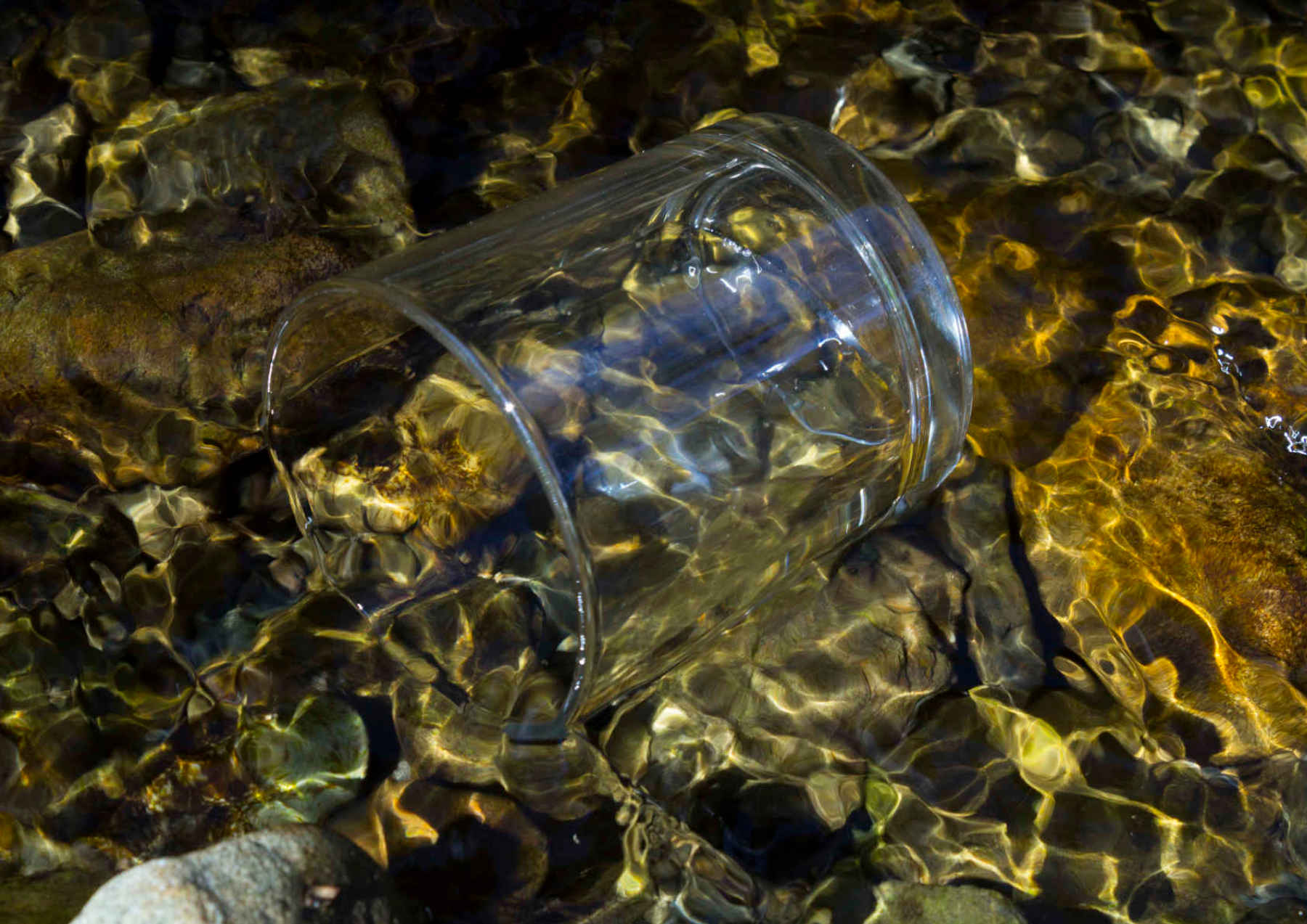
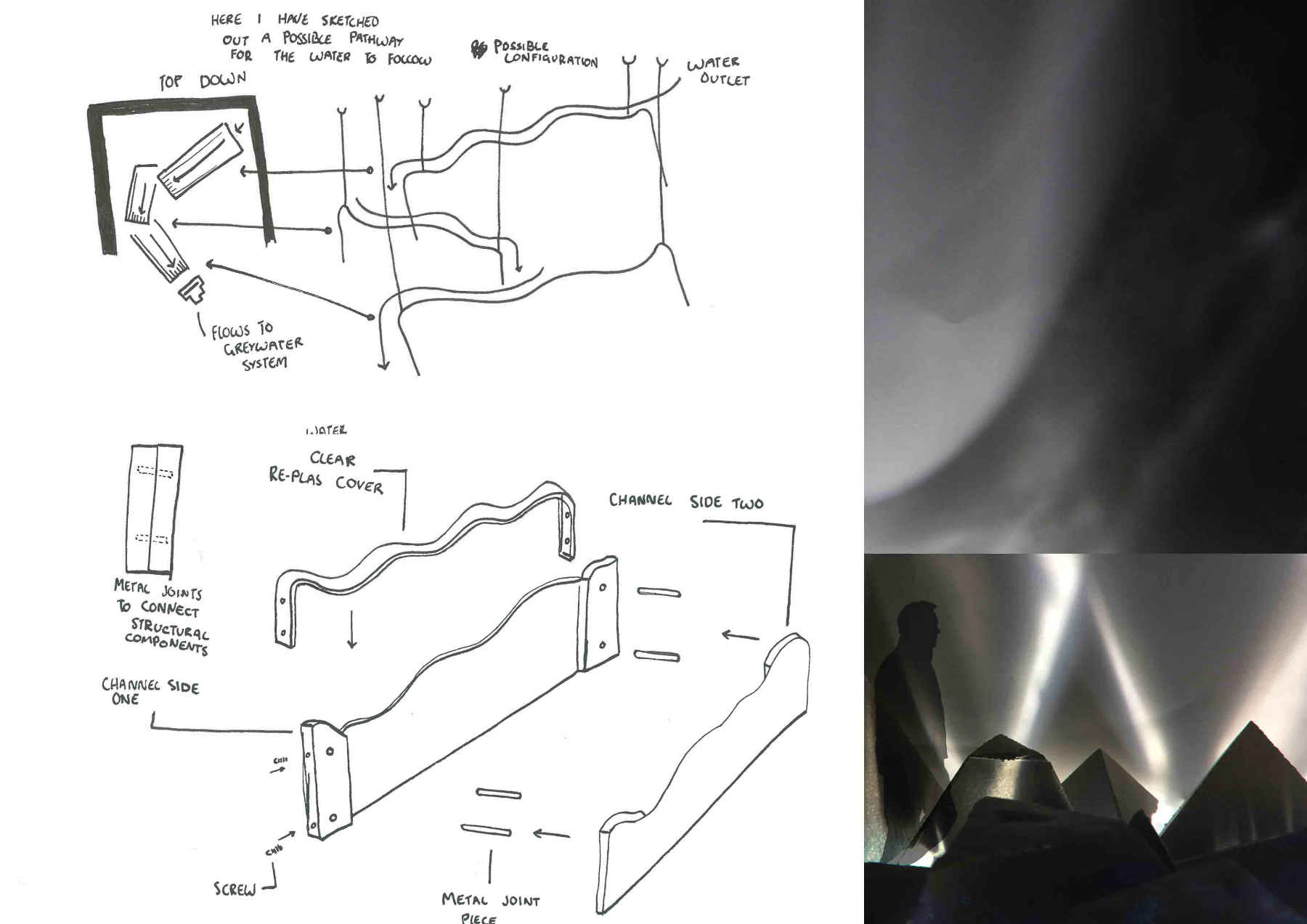
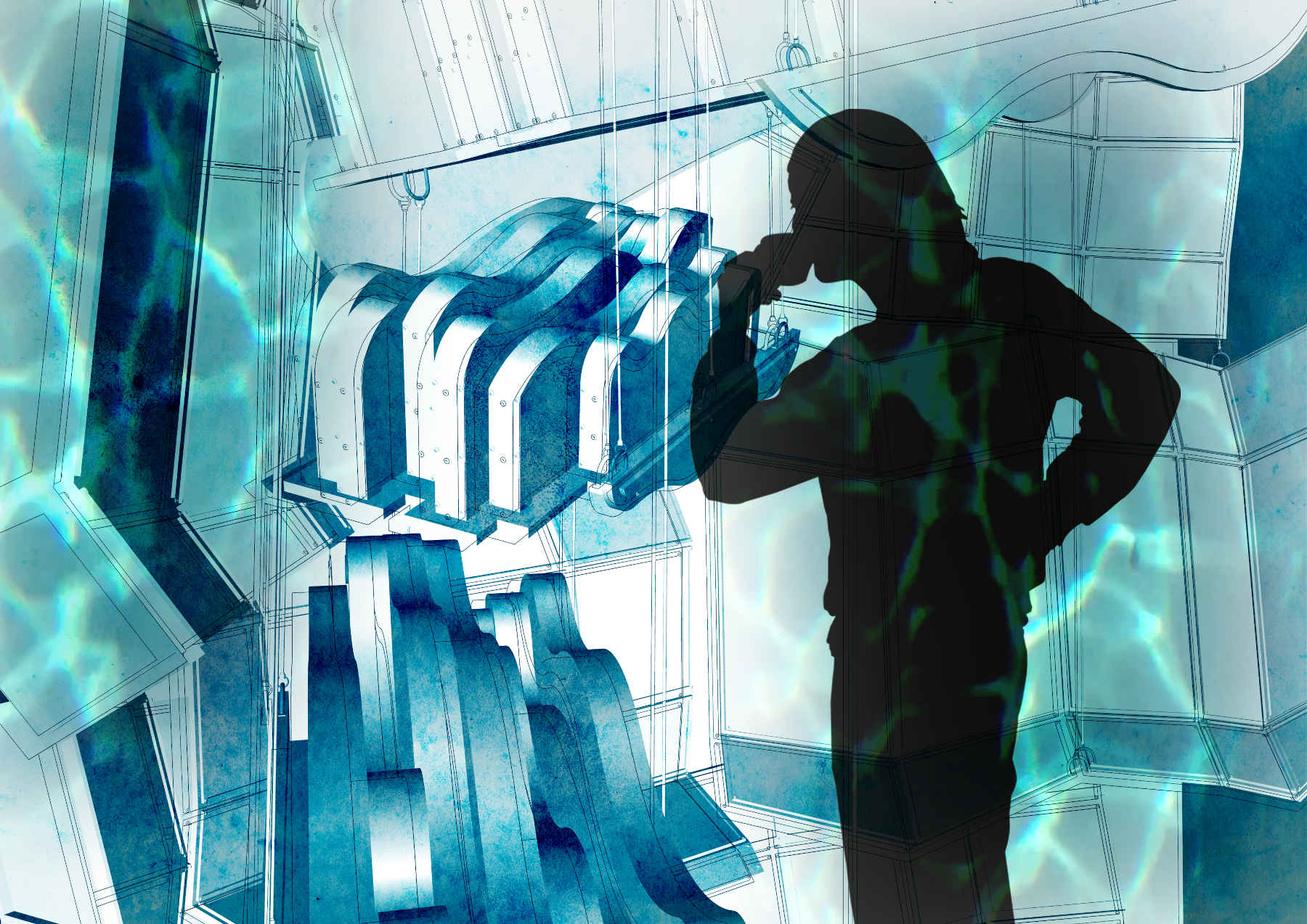

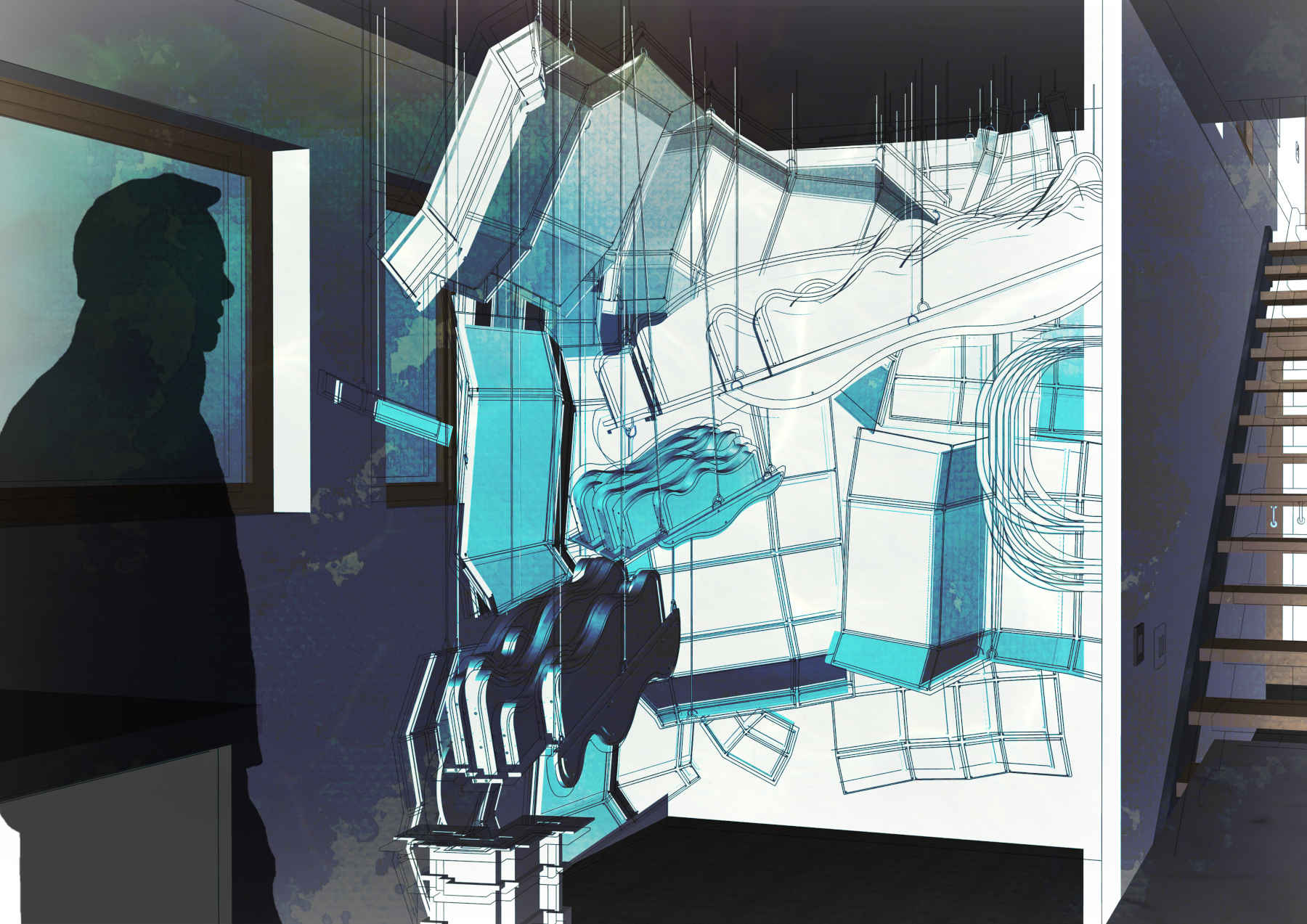
The staircase draws on experiences of trekking through changing terrains. I documented plantlife and the topography of the landscape. Concepts focused on light manipulation and interactions with natural objects that I collected. The tread is transparent acrylic with embedded LEDs, suspended above are laser-cut silhouettes of various objects I found during my journey. The motion of going up or down the stairs creates shifting shadows. Changing light tones reflect the different environments.
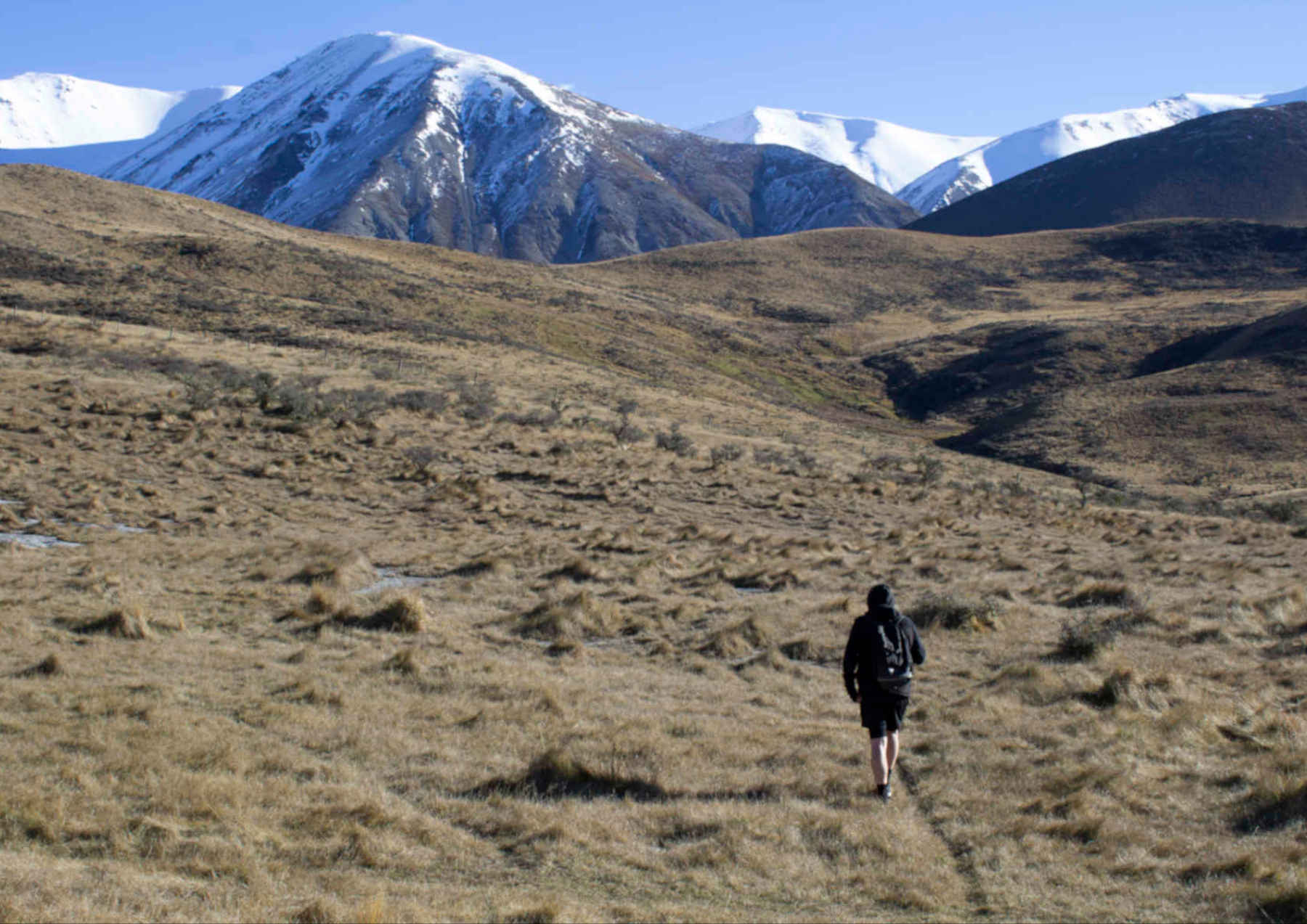
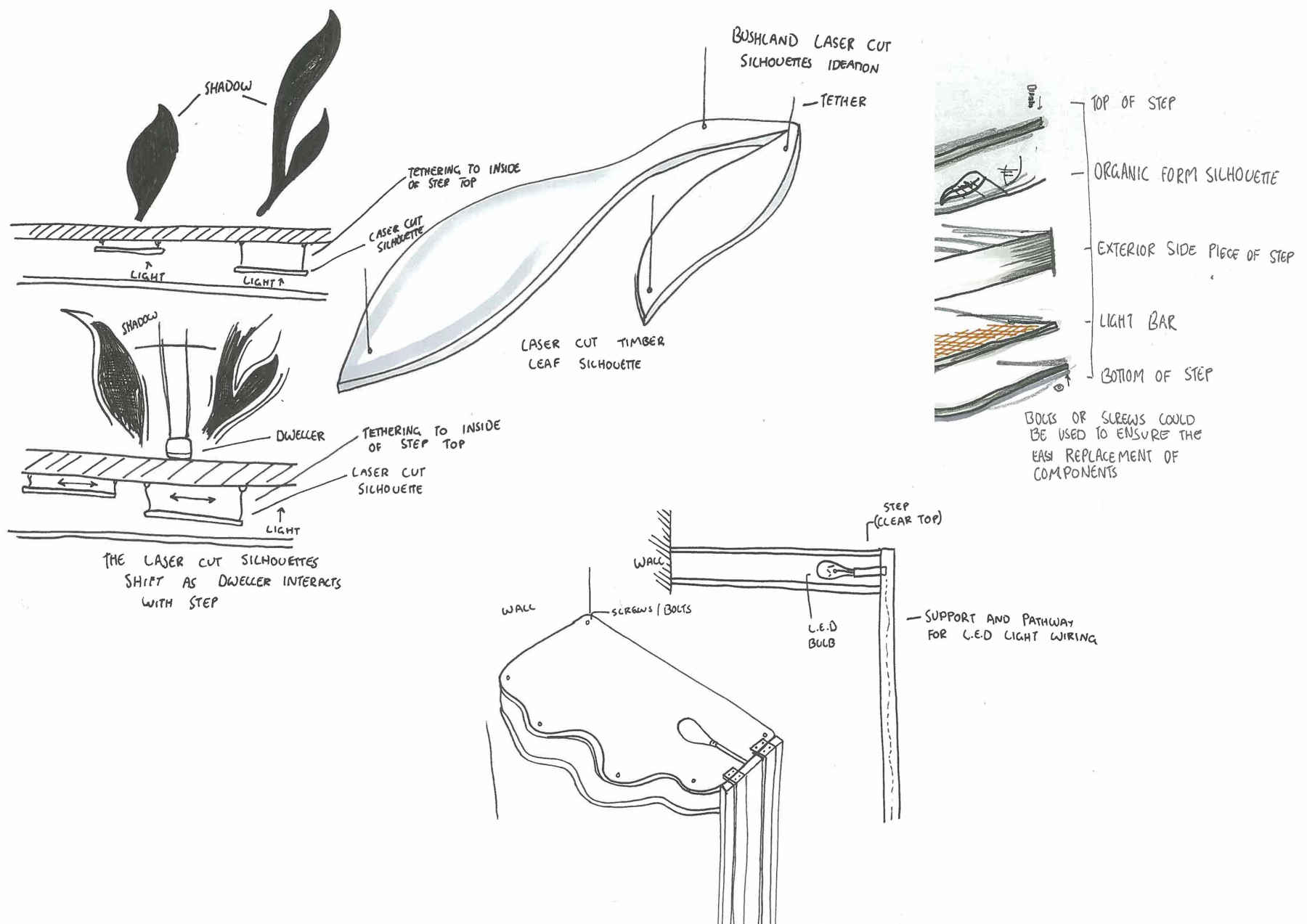
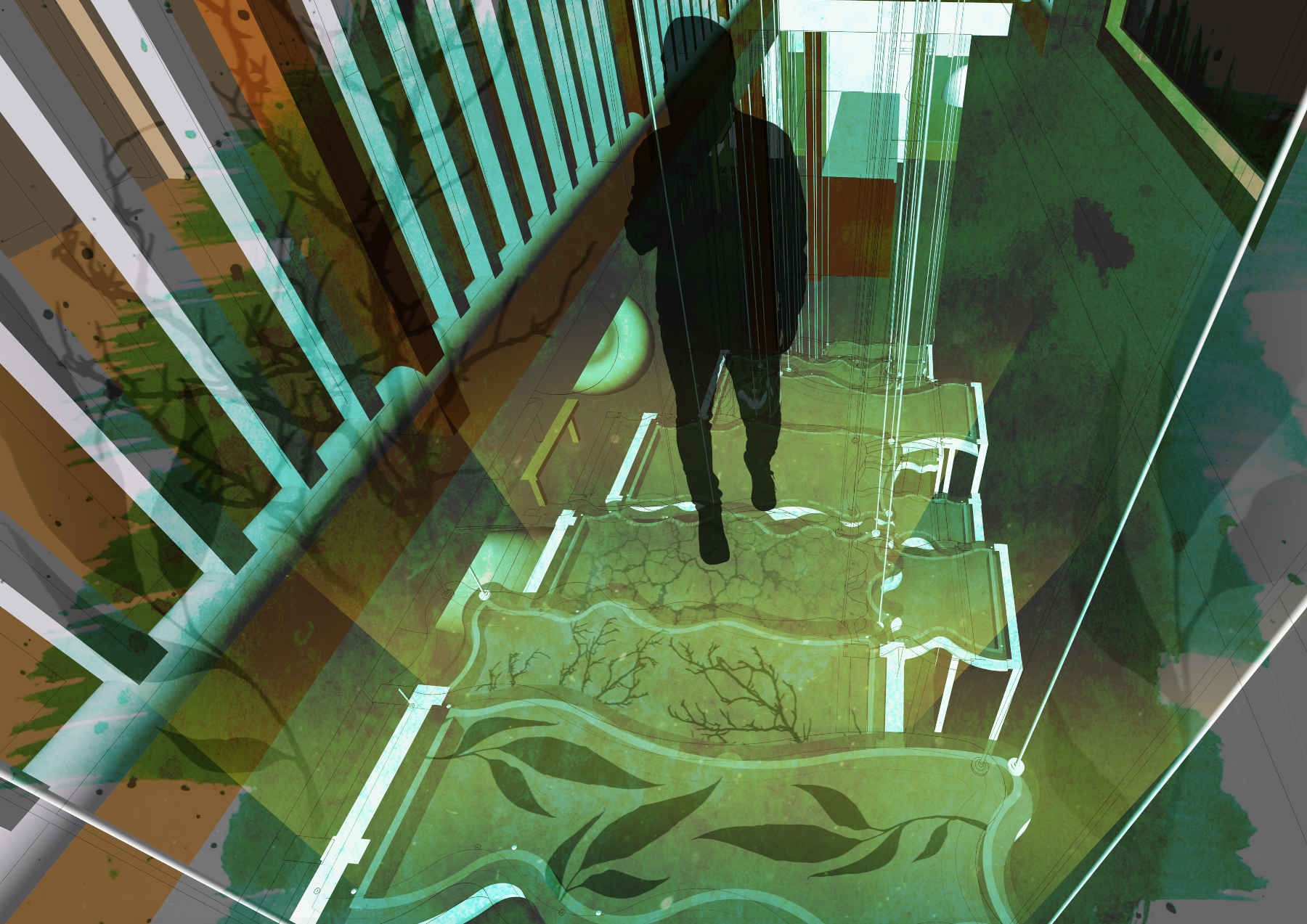
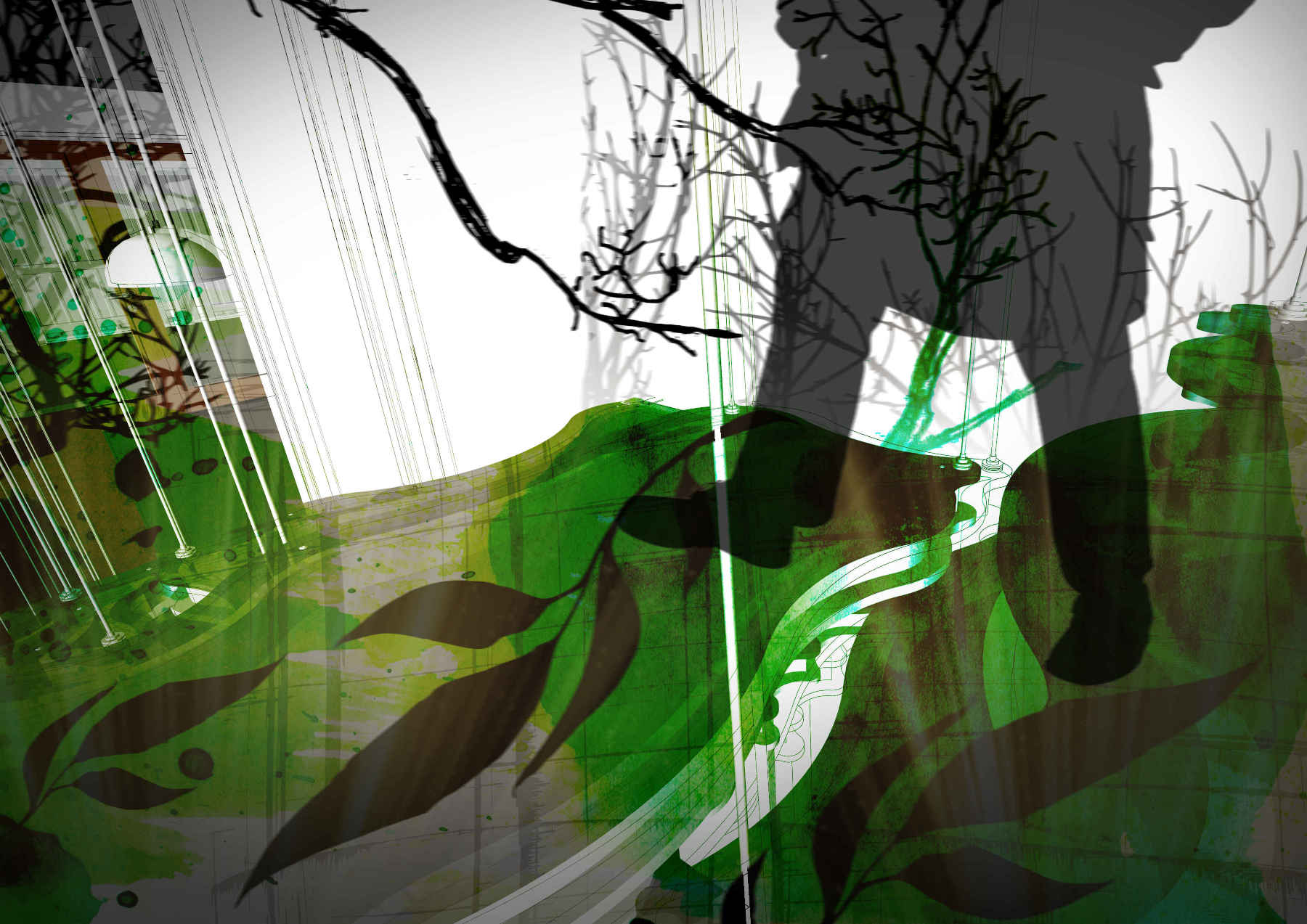
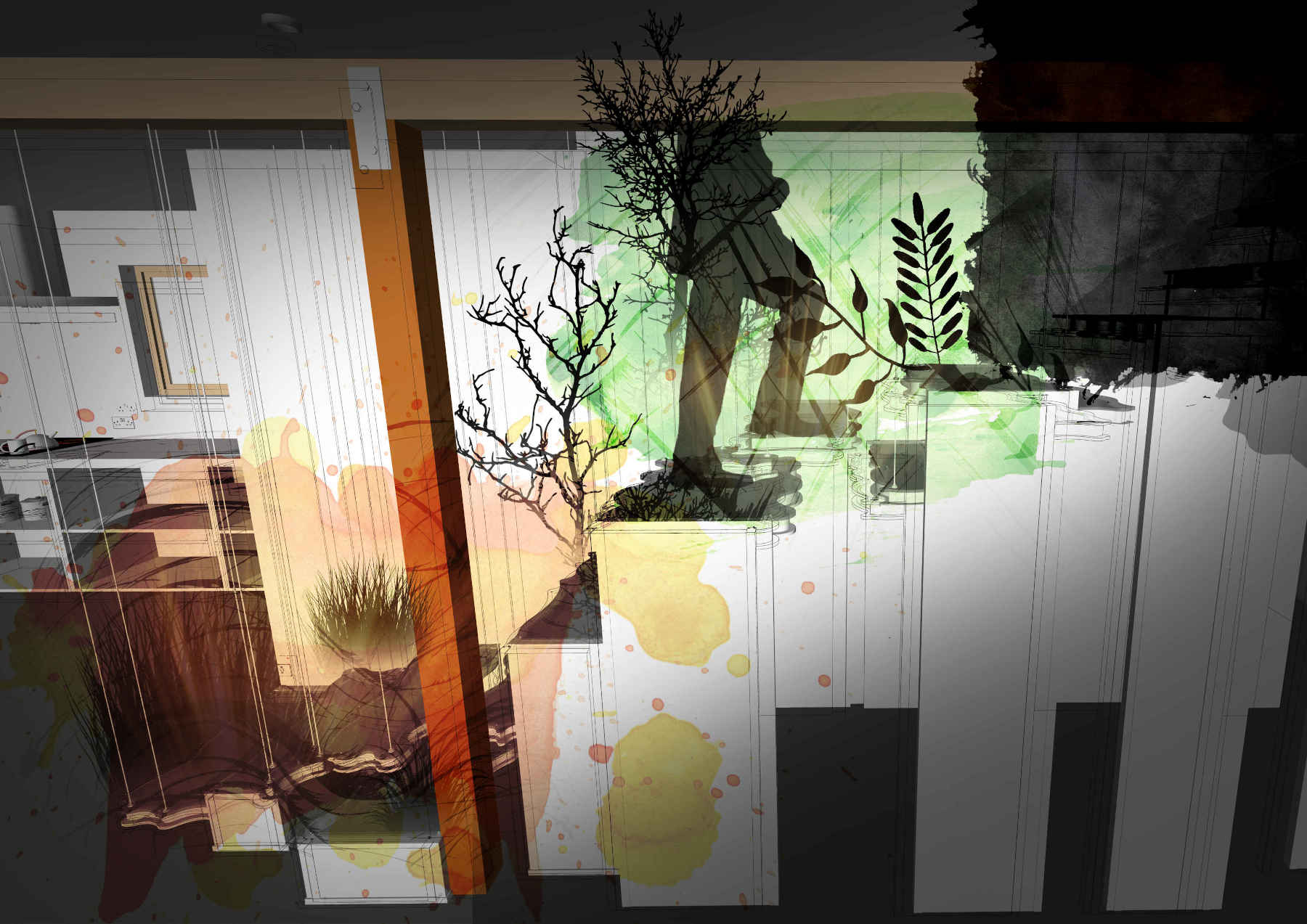
The home's shower redesign draws on my experience of a wet weather event. I documented changing light throughout the sequence of the storm, foliage flexing and distorting in collision with droplets, ever-changing size and intensity of the droplets, and a visual reflective haze painted over leaves. A series of LED light bars dim and brighten as the user increases or decreases water pressure, individual brass fittings with varying internal diameters stretch out into the space, distributing droplets over the entirity of the base. Green canvas sheets can be lowered through a tethering and pulley system, collecting and dispersing droplets.
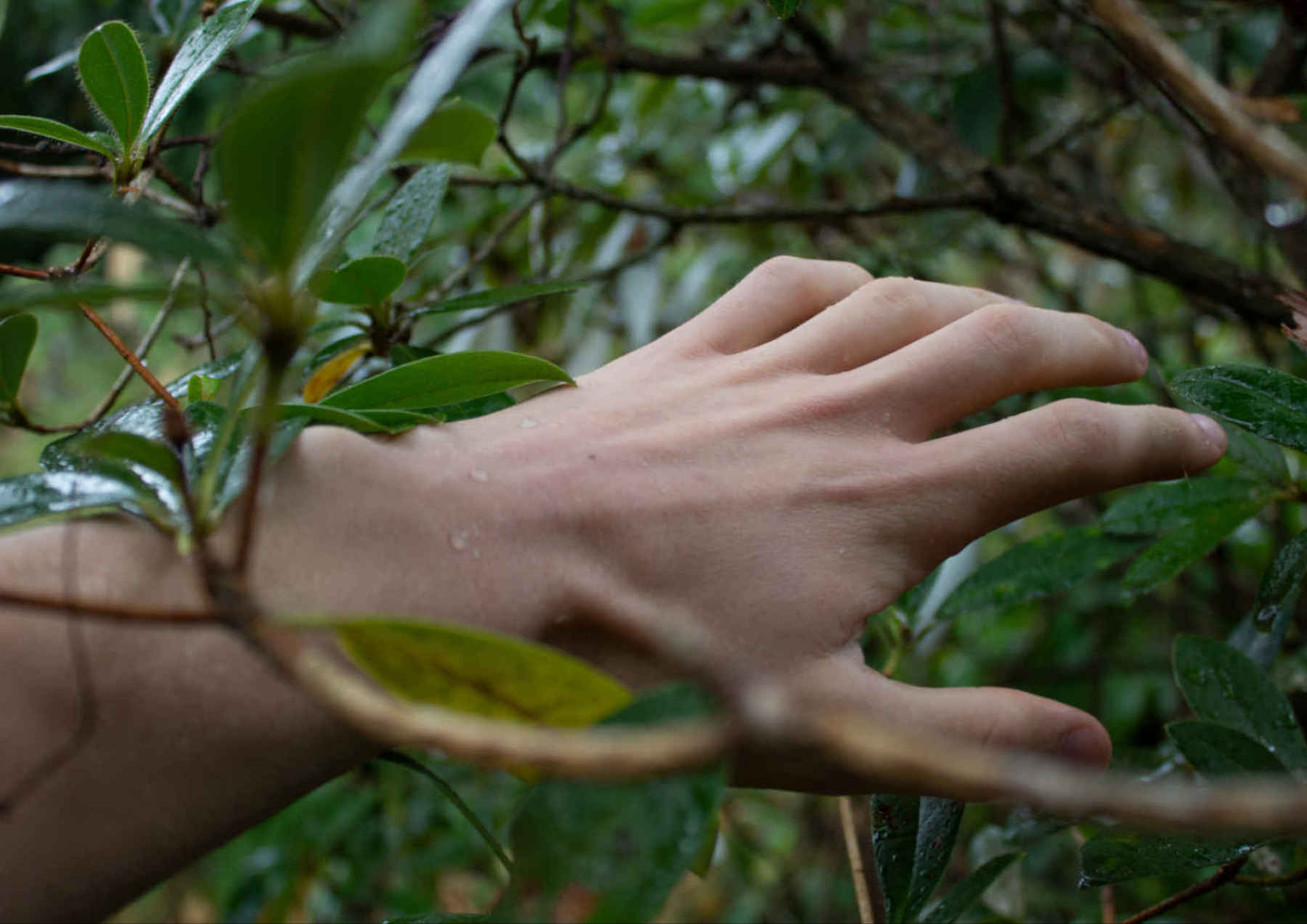
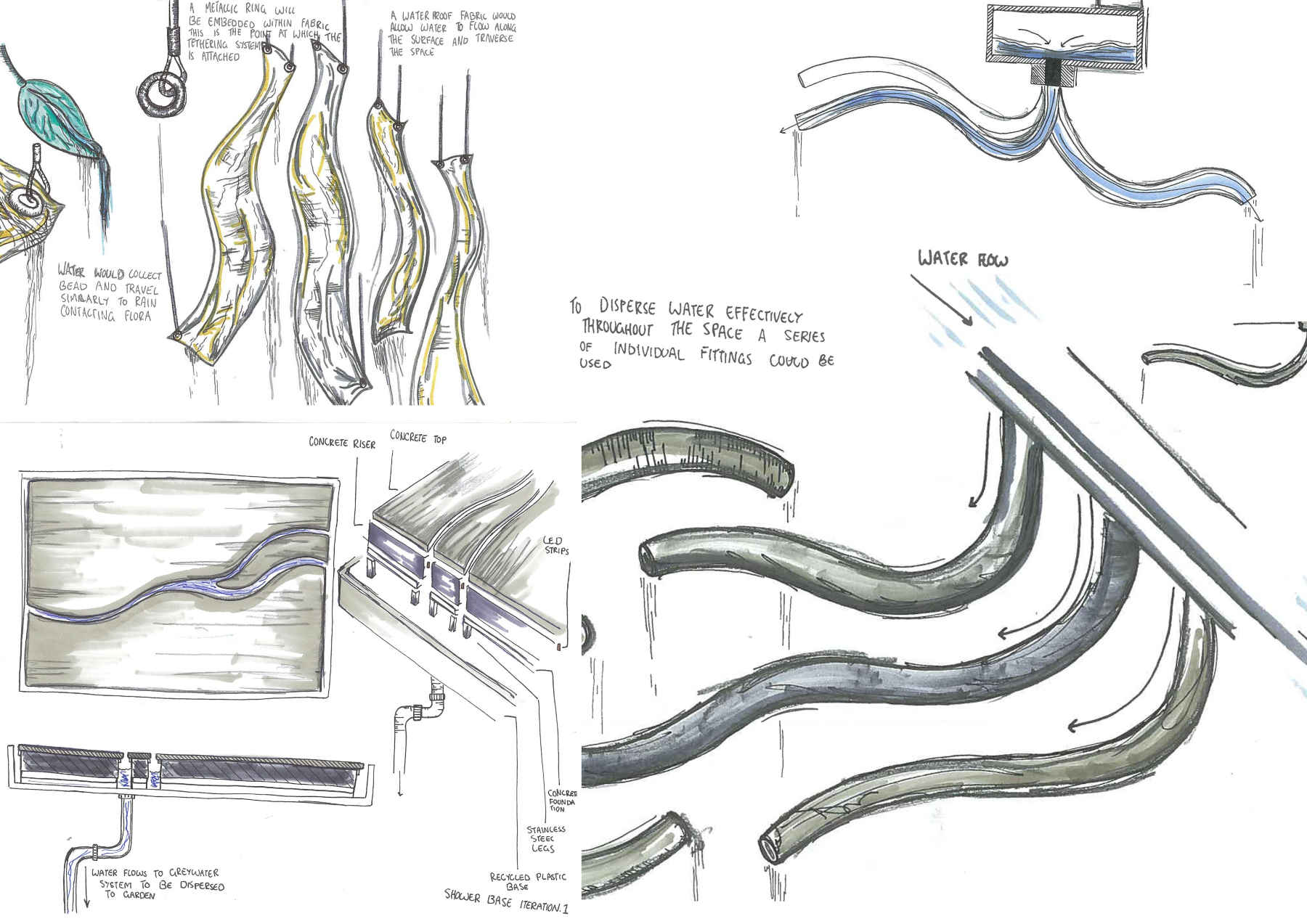
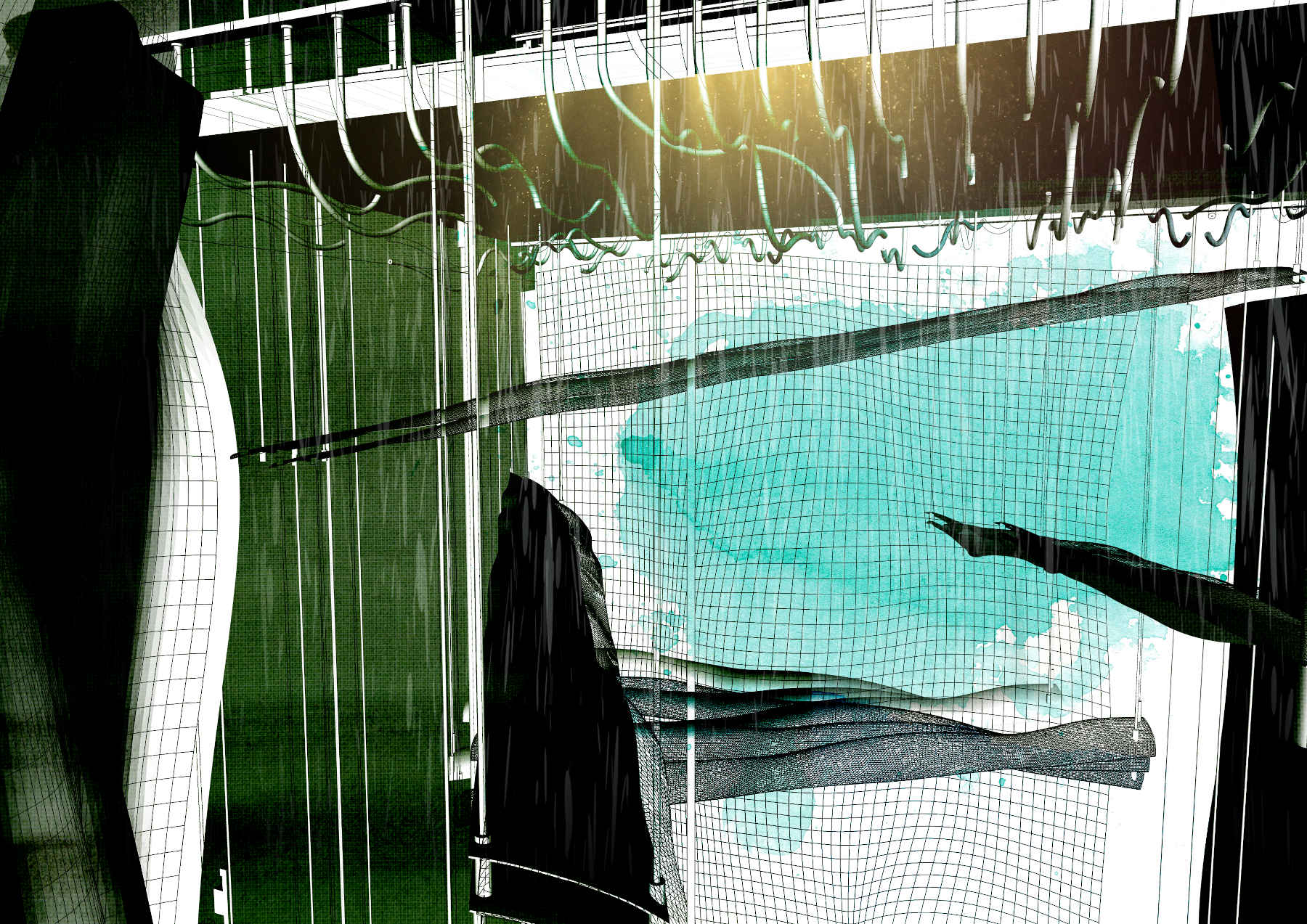
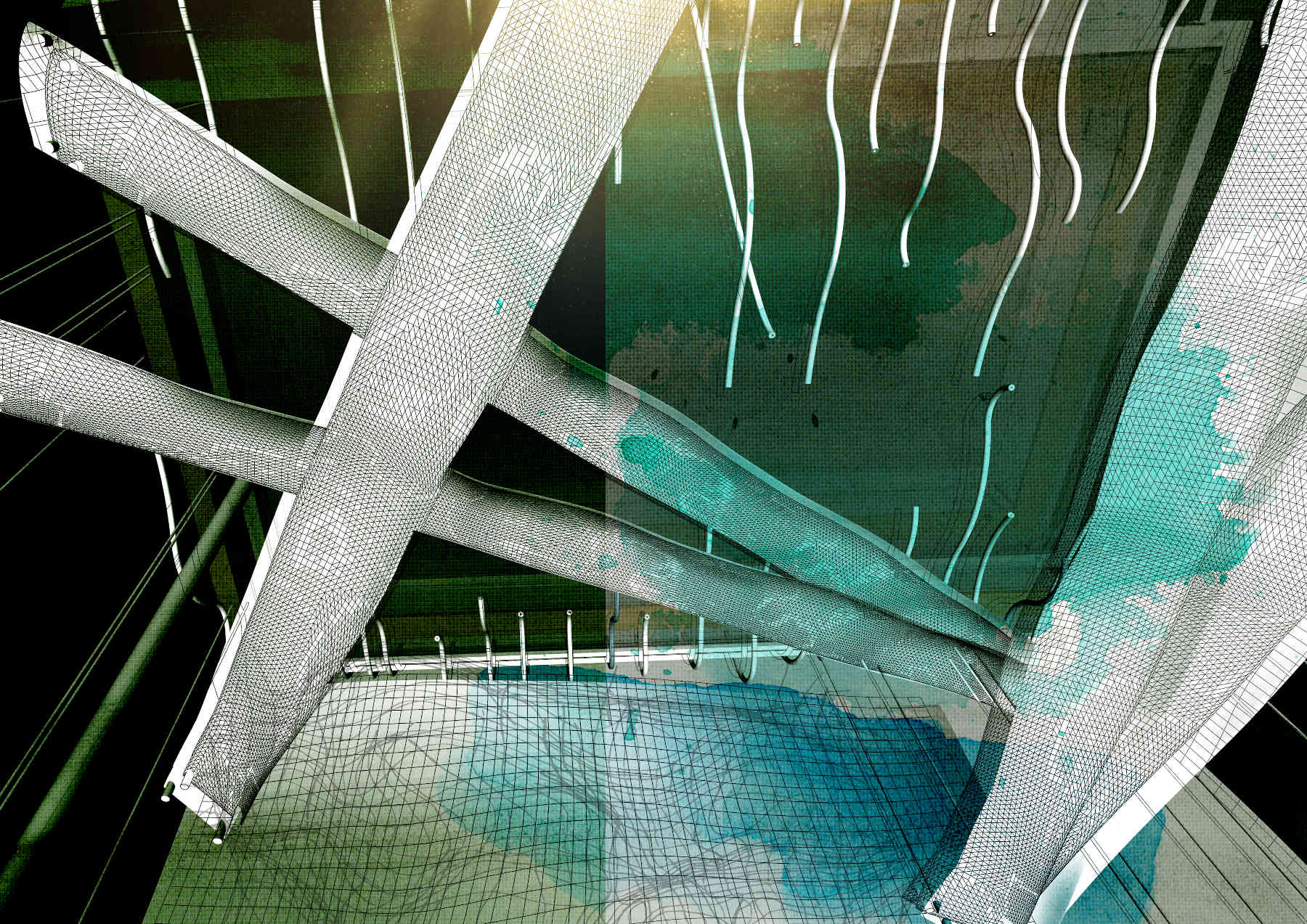
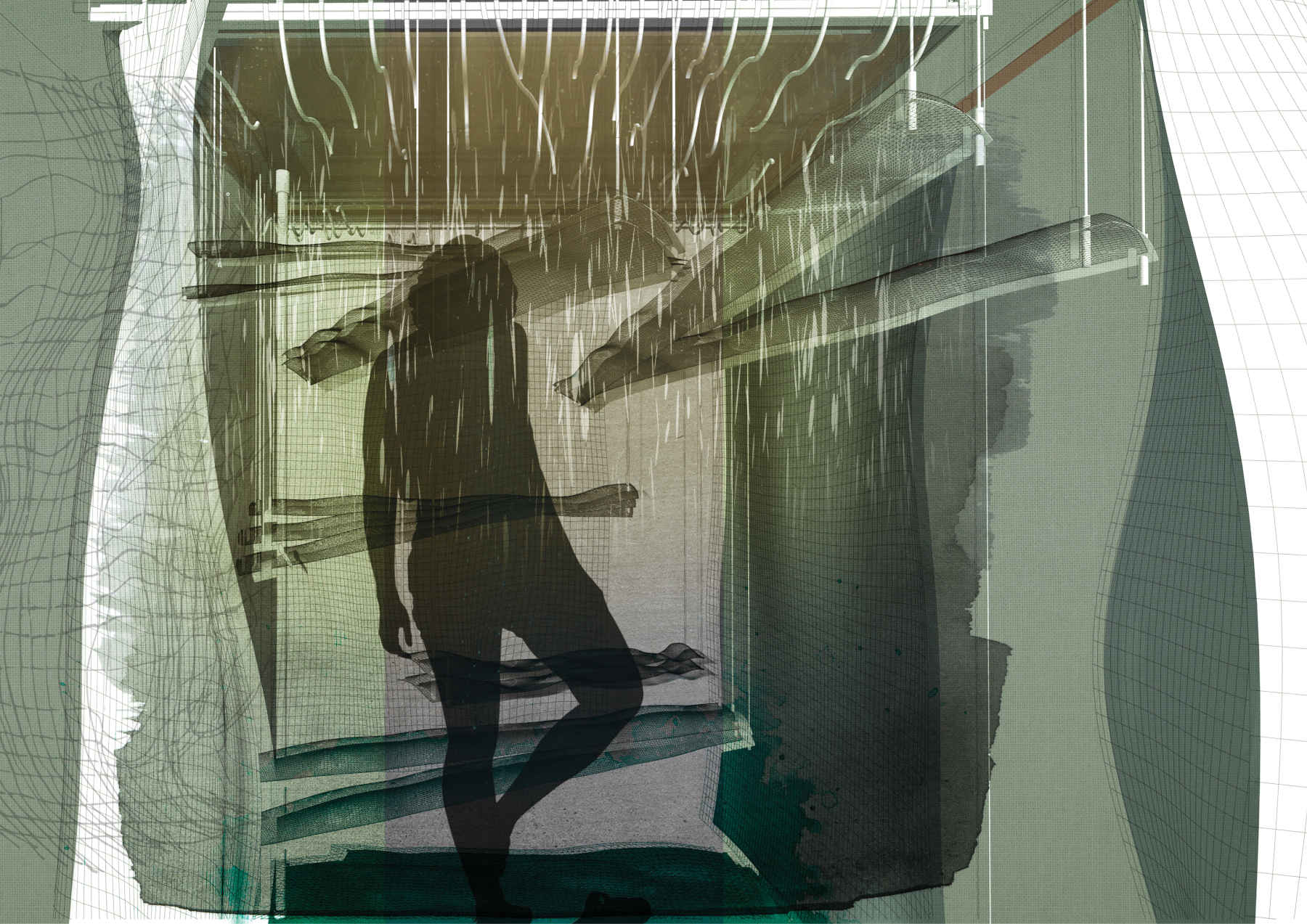
The redesigned lounge seating draws on experiences of residing along a rugged coastline. I documented the manner in which sand would morph under my weight. At the different stages of a wave, the water adopts differend forms and changes from a slow and steady tumbling motion to profound collisions against the rock formations. Recycled pine slats serve as the canvas for moving projections which appear dispersed similar to water colliding with the rocks. Curved slats beneath each seat allow for a rolling motion and suspended timber timber sculptures serve as surface for projection. Padding is a shaped memory foam material.
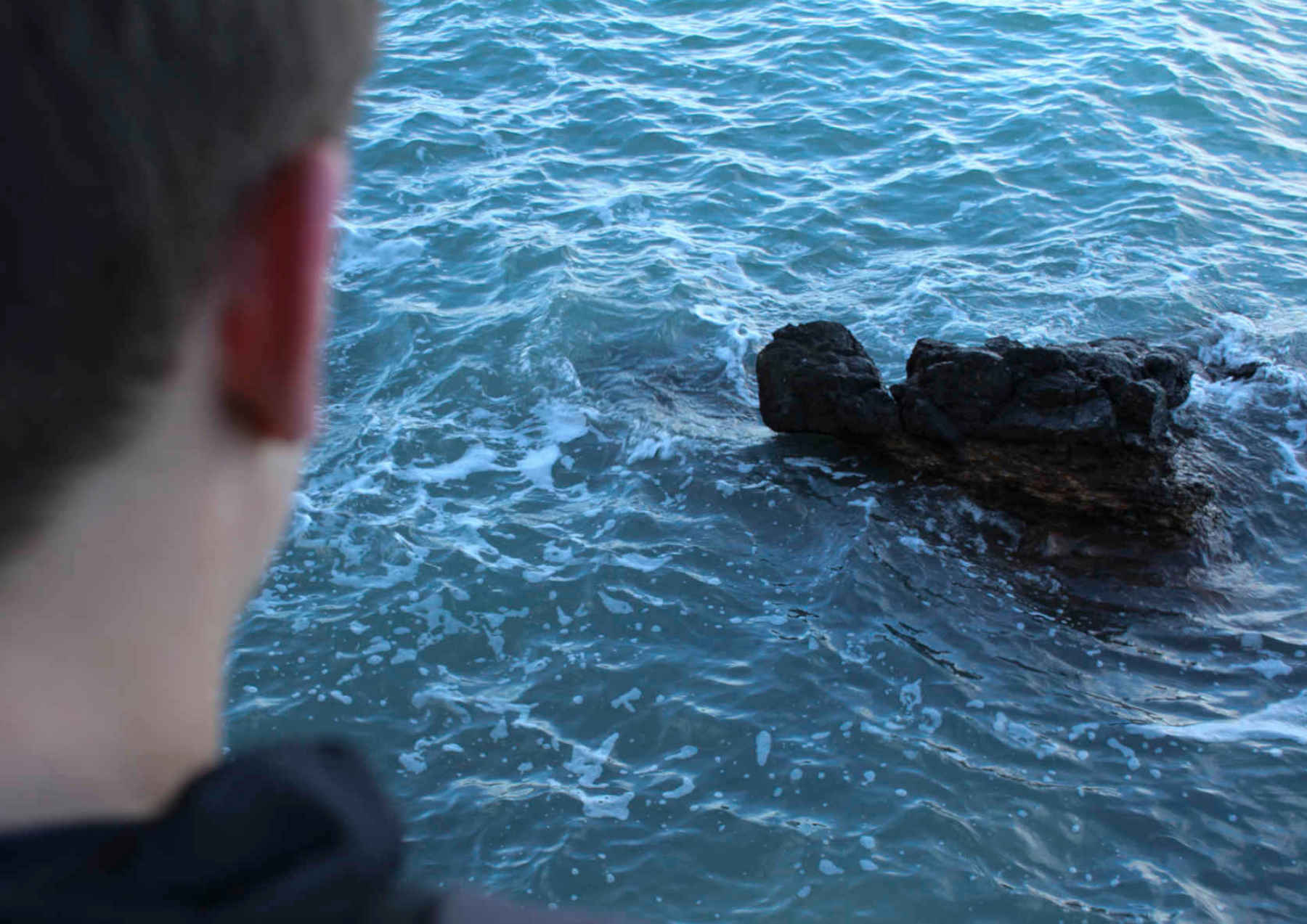
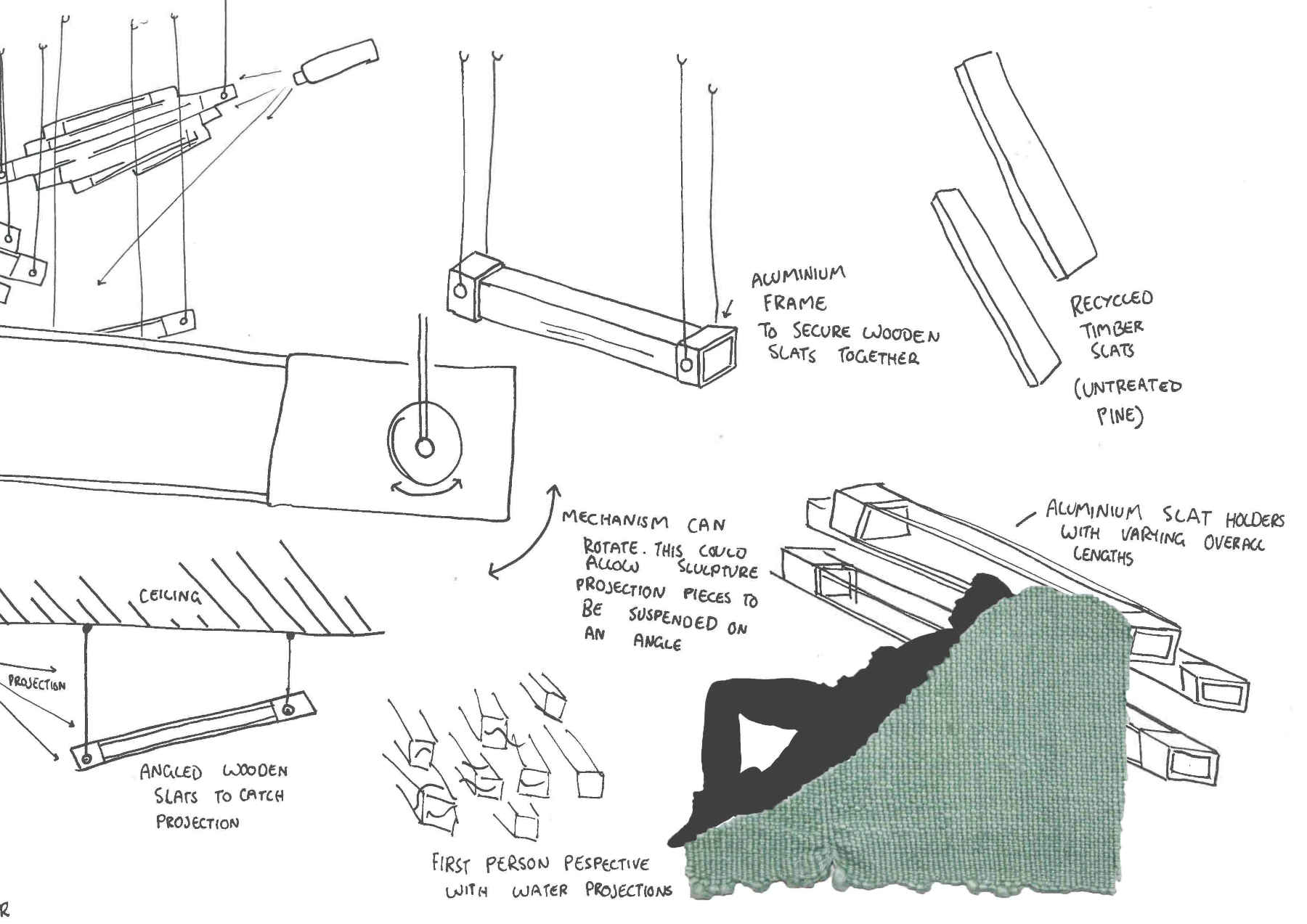
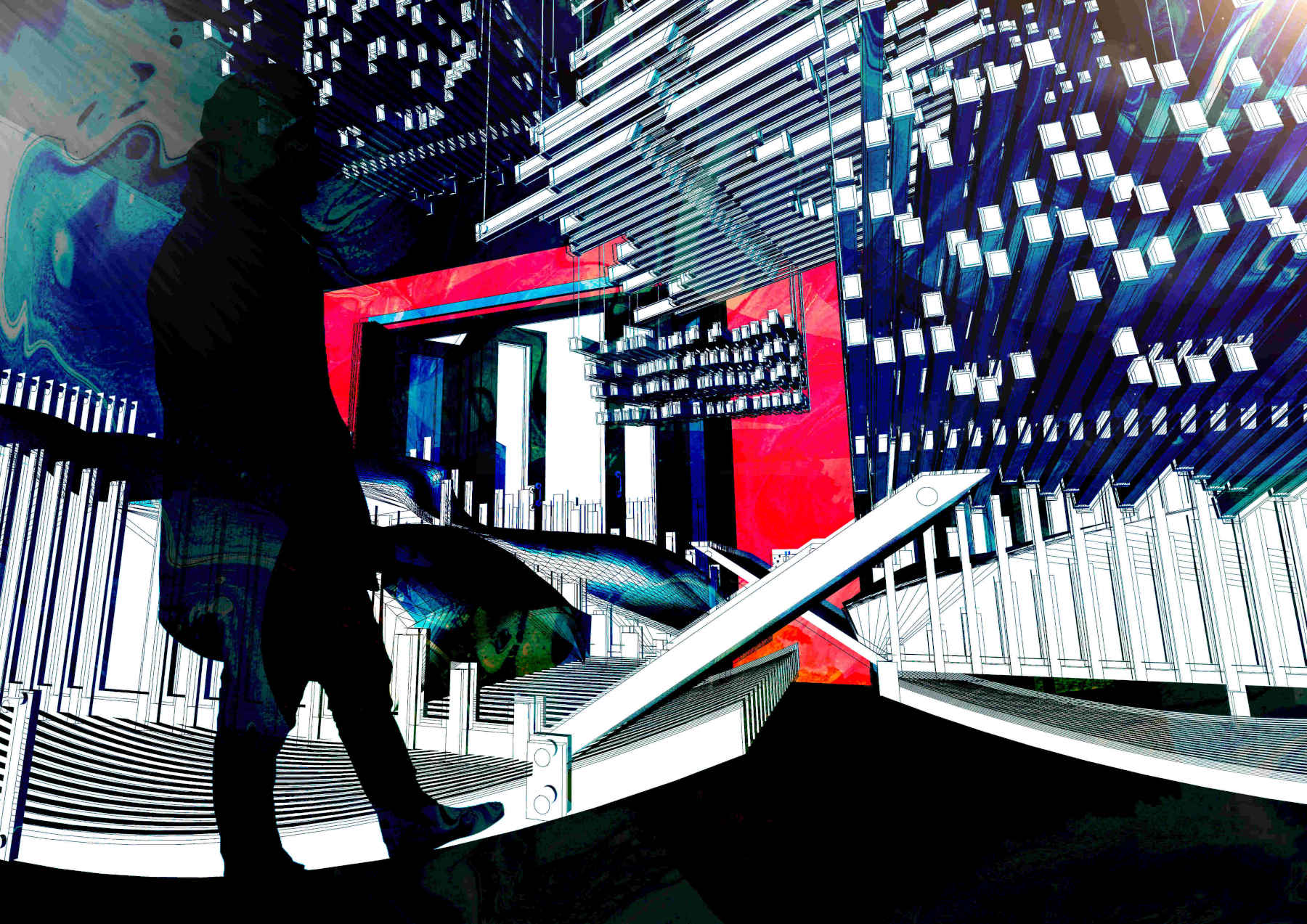
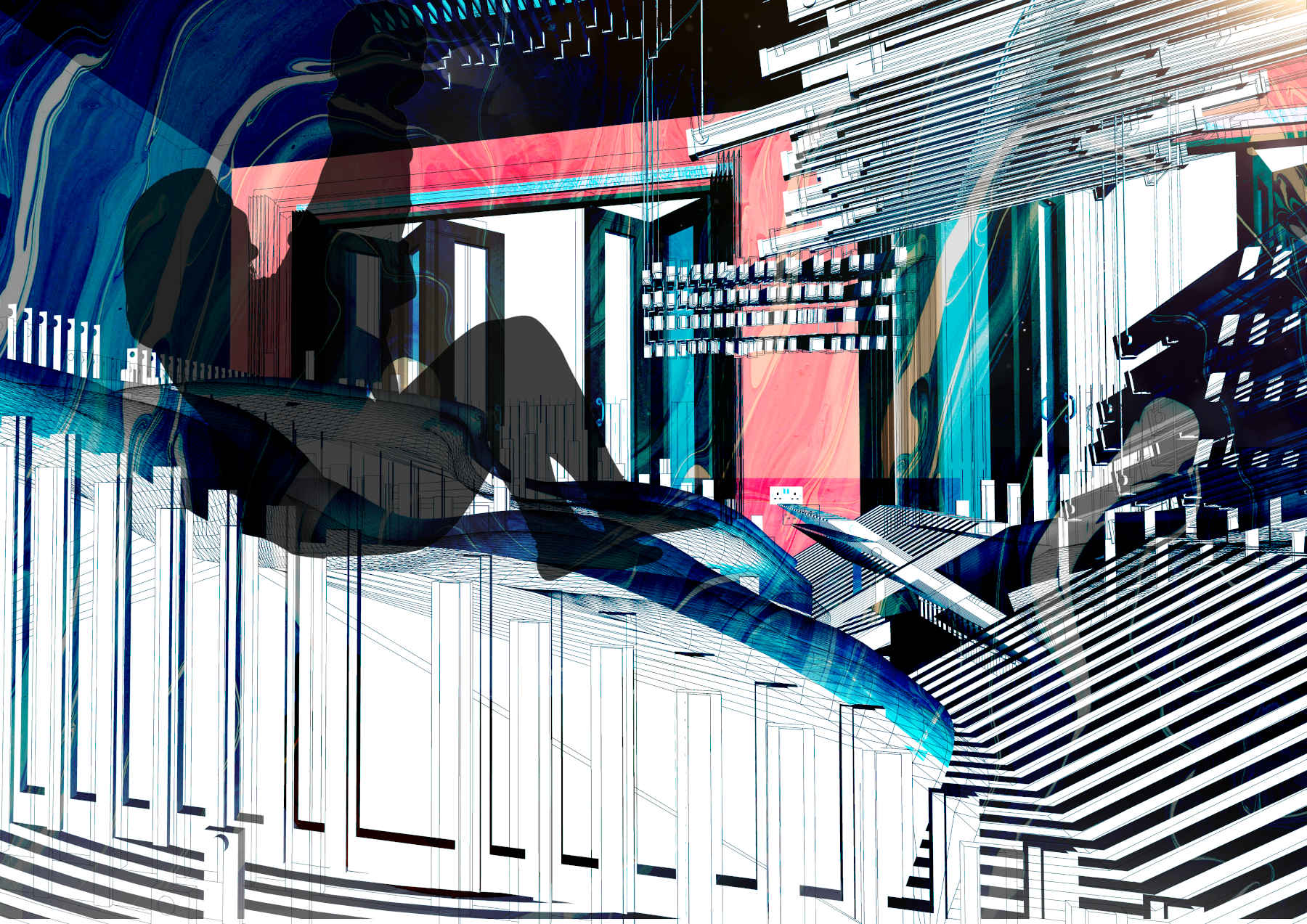

Cloud form and deformation. Movement and changing light throughout the course of the day are the elements which I documented during my phenomena experience. The lampshade sits along a pulley system suspended above the dining room. Recycled cotton serves as a skin for a recycled pine frame, the colour of the cotton parallels light tones in early morning, midday, and evening, these are placed gradually along a spectrum. The shades shift around an LED light bar positioned at the centre. The shades are spaced in a manner that allows for moments of direct light to paint the surrounding environment.
